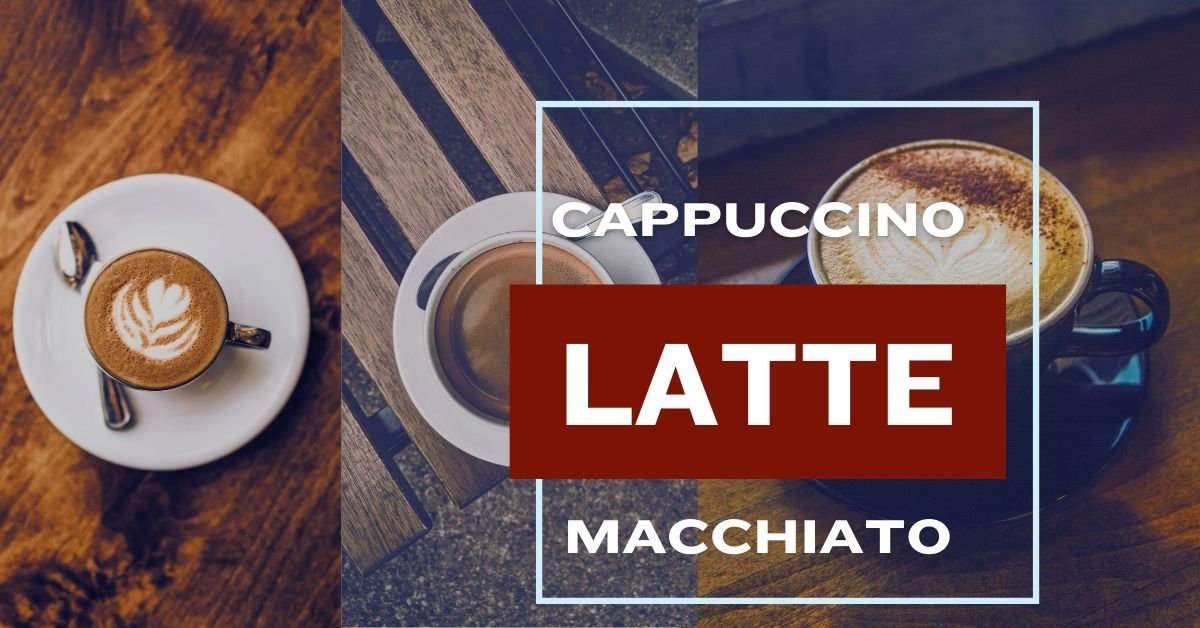Stepping into a cozy café, the aroma of freshly brewed coffee wraps around us like a warm hug. But as we scan the menu, the choices can be a tad overwhelming. Cappuccino, latte, macchiato, mocha… the list goes on. Each one sounds as inviting as the next, but what exactly sets them apart? It’s not just about the caffeine kick; it’s an art and science that defines our mornings and perks up our afternoons.
We’ve all been there, standing in line, debating whether today feels more like a latte day or if we’re in the mood to mix things up with a macchiato or mocha. Understanding these coffee classics not only makes us savvier café-goers but also enhances our appreciation for each sip. So, let’s dive into the delightful world of these beloved brews, unraveling their mysteries one frothy layer at a time.
Understanding the Basics of Espresso-Based Drinks
Building on our journey through the world of café culture, we delve deeper into the espresso-based classics that often puzzle even the most seasoned coffee aficionados. Let’s demystify these beloved drinks, breaking down their key characteristics and what sets each apart. By gaining a better understanding, we empower ourselves to make informed choices that suit our taste preferences and mood.
What Is a Cappuccino?
At the heart of it, a cappuccino is a delicate balance of espresso, steamed milk, and froth in equal parts. Picture this: a robust shot of espresso forms its base, providing that rich, intense coffee flavor we all crave. Then, steamed milk enters the scene, softening the espresso’s assertiveness with its creamy, smooth texture. The crowning glory of a cappuccino is its thick, airy froth, which not only adds a luxurious feel to each sip but also serves to retain the warmth of the drink. Traditionally garnished with a sprinkle of cocoa powder or cinnamon, cappuccinos offer a comforting yet sophisticated experience. It’s the dance of boldness and subtlety in every cup that makes a cappuccino a timeless classic.
What Is a Latte?
In contrast, a latte skews towards the milkier side of the spectrum. It starts with a rich espresso base, akin to a cappuccino, but what follows is a generous helping of steamed milk, which dwarfs the espresso in volume, creating a creamier and less intense drink. The latte is often viewed as the smooth, laid-back cousin of the cappuccino, presented with just a light touch of froth on top. This silky beverage can serve as a canvas for artistic baristas who craft beautiful latte art atop its surface, making it not just a drink but a piece of art. For those who enjoy the essence of coffee but prefer a milder, creamier flavor profile, the latte is an ideal choice.
What Is a Macchiato?
The macchiato, with its name meaning “stained” or “spotted” in Italian, is an intriguing blend of boldness and brevity. It primarily consists of a shot of espresso “stained” with a dollop of frothed milk on top. This minimalist approach allows the espresso’s powerful flavor to dominate, with just a hint of sweetness and creaminess courtesy of the milk. Macchiatos are perfect for those who appreciate the unadulterated strength of espresso but are looking for just a touch of softness to round out the edges. It’s a drink that packs a punch while maintaining a semblance of gentleness.
What Is a Mocha?
Lastly, the mocha is a decadent treat that sits at the crossroads of coffee and dessert. It begins with espresso and hot milk like the others but introduces chocolate to the mix, resulting in a rich, indulgent concoction. Whether it’s through chocolate syrup, cocoa powder, or even chunks of chocolate, the addition of this sweet element transforms the drink into a luxurious experience. Topped often with whipped cream and an additional sprinkle of cocoa or chocolate shavings, mochas cater to those who love their coffee with an extra dose of sweetness and complexity. It’s the perfect choice for anyone looking to indulge their sweet tooth while getting their caffeine fix.
In our exploration of Cappuccino Vs Latte Vs Macchiato Vs Mocha, it’s clear that while they share common roots, each drink carves its own niche based on its unique composition and flavor profile. Whether you’re in the mood for something bold, smooth, straightforward, or sweet, there’s an espresso-based drink out there for you.
Features of Each Espresso Drink
Diving deeper into the world of espresso drinks—namely, cappuccino, latte, macchiato, and mocha—gives us a fascinating insight into how each of these beloved beverages holds its special place in café culture. Let’s explore the distinctive features of each drink regarding their milk to espresso ratios, flavor profiles, and textural differences. This way, we can appreciate even more what makes each one unique and discover our personal favorites.
Milk to Espresso Ratios
Starting with the basics, the milk to espresso ratio is fundamental in differentiating these drinks. A cappuccino boasts a 1:1:1 ratio of espresso, steamed milk, and milk froth, creating a harmonious balance between the boldness of espresso and the creaminess of milk. For those of us who cherish a perfect blend of strength and smoothness, a cappuccino fits the bill nicely.
Moving to a latte, the ratio tips heavily in favor of steamed milk, usually around 1 part espresso to 3 or 4 parts milk, topped with just a splash of foam. It’s the go-to choice for those of us who love a creamier, more dilute coffee flavor, making it a softer, more sippable experience.
A macchiato, in contrast, maintains a stark simplicity with basically a shot of espresso “stained” or “marked” with just a dollop of milk or foam. For enthusiasts who desire the unadulterated punch of espresso with just a hint of smoothness, the macchiato doesn’t disappoint.
Lastly, the mocha takes a unique turn by mixing chocolate with the espresso before adding steamed milk and sometimes a layer of whipped cream on top. Its ratio resembles that of a latte but with the added chocolate component, catering to our love for sweet indulgence alongside our caffeine fix.
Flavor Profiles
When it comes to flavor, each drink tells its own story. Cappuccinos, with their equal parts, offer a rich yet balanced coffee flavor, brightened with the sweetness of milk. The texture and temperature of the froth play a role in enhancing the sensory experience, making it a beloved morning ritual for many.
Lattes lean towards mildness and are often the canvas for flavored syrups, accommodating everything from vanilla to caramel, catering to a sweeter palate. It’s a comforting beverage, ideal for leisurely sipping.
For a macchiato, the flavor is bold, robust, and decidedly coffee-centric, with the slightest whisper of milk softening the espresso’s sharpness. It’s straightforward and unapologetically coffee-like, appealing to purists among us.
Mochas, with their blend of chocolate and coffee, offer a luxurious flavor profile. The chocolate heightens the natural richness of the espresso, creating a dessert-like experience that satisfies sweet tooth cravings alongside the need for a caffeine boost.
Textural Differences
Texture plays a crucial role in the enjoyment of these drinks. The cappuccino‘s frothy top layer offers a unique mouthfeel that contrasts with the warmth and fluidity of the milk and espresso beneath. It’s almost like enjoying two beverages in one: a cozy foam followed by a smooth drink.
In contrast, lattes present a silkier, more homogenous texture throughout, given the higher milk content and light foam topping. The experience is more about consistency, making it wonderfully easy to drink.
Macchiatos might offer the least in terms of textural complexity due to their minimalistic approach, but the slight milk presence does introduce a subtle softness to the potent espresso shot, creating a momentary but memorable tactile experience.
Pros and Cons
Exploring the world of espresso-based drinks, we find ourselves diving deep into the characteristics of cappuccinos, lattes, macchiatos, and mochas. Each brings a unique experience to the table, but like anything in life, they come with their advantages and disadvantages. Here, we break down these aspects to help you better understand what might suit your coffee cravings the best.
Advantages of Cappuccino
The cappuccino, with its perfect balance of espresso, steamed milk, and froth, offers a rich yet airy coffee experience. Its layered texture not only makes it visually appealing but also gives it a delightful mouthfeel that’s both creamy and full-bodied. The equal parts of its composition make it an excellent choice for those who enjoy both the robustness of espresso and the creaminess of milk without overpowering one another. Additionally, the froth on top serves as a perfect canvas for baristas to showcase their latte art skills, adding a touch of beauty to your morning ritual.
Disadvantages of Cappuccino
However, the very balance that makes a cappuccino delightful can also be seen as its downside. For coffee purists who prefer a stronger espresso flavor, the equal milk content might dilute the coffee essence too much. Furthermore, the froth layer, while aesthetically pleasing, cools down the drink faster than its counterparts, making it less ideal for slow sippers.
Advantages of Latte
Lattes cater to those who favor a creamier and smoother coffee drink. With a higher milk-to-espresso ratio, a latte is milder and more milk-forward, making it an excellent choice for individuals who might find straight espresso too intense. Its versatility is another significant advantage; a wide variety of syrups and flavors can be added to a latte, allowing for a customizable coffee experience that can cater to any preference or mood.
Disadvantages of Latte
On the downside, the very characteristic that makes a latte appealing to some can be a drawback for others. The higher milk content can sometimes overshadow the rich complexity of the espresso, leaving coffee aficionados craving more of that signature espresso punch. Also, its creaminess may not be everyone’s cup of…coffee, especially for those who prefer their morning brew to have a bit more bite.
Advantages of Macchiato
The macchiato stands out for its simplicity and strength. It’s essentially espresso “marked” with just a dab of milk, appealing greatly to those who desire the bold, unadulterated flavor of coffee. Its minimalistic approach not only highlights the quality of the espresso but also makes it a low-calorie option compared to its milkier counterparts. For espresso lovers seeking a purer coffee experience with a slight creamy texture, the macchiato hits the mark perfectly.
Disadvantages of Macchiato
Its strength, however, might not sit well with everyone. Newcomers to the coffee scene or those with a preference for milder flavors might find the macchiato too potent. Additionally, the lack of milk and froth means there’s less room for error when brewing the espresso – any slight imperfection in the coffee’s extraction process becomes more noticeable.
Advantages of Mocha
The mocha offers a unique blend of coffee and chocolate, serving as a delightful crossover between a beverage and a dessert. Its chocolatey goodness appeals not only to coffee lovers but also to those who might not usually enjoy coffee, thanks to the sweet balance the chocolate provides. This makes the mocha a crowd-pleaser and a perfect treat for any time of the day. Plus, it’s a great gateway for introducing non-coffee drinkers to the world of espresso-based beverages.
Disadvantages of Mocha
On the flip side, the addition of chocolate and usually whipped cream skyrockets the calorie count, making it less ideal for those watching their intake or preferring a healthier coffee choice. The sweetness of the mocha can also overpower the espresso for some, masking the nuanced flavors of the coffee itself and potentially becoming too indulgent for a daily drink.
In understanding the pros and cons of cappuccino, latte, macchiato, and mocha, we hope to have illuminated the spectrum of choices available in the espresso-based drink category. Each has its place in the coffee world, catering to different tastes, moods, and occasions. Whether you’re in the mood for something rich, creamy, strong, or sweet, there’s a perfect coffee out there for you.
Performance and User Experience
In exploring the performance and user experience of espresso-based drinks like cappuccinos, lattes, macchiatos, and mochas, we dive deeper into what sets each apart and how they cater to the diverse tastes and preferences of coffee lovers around the world. Each of these beverages offers a unique sensory experience, balancing flavor, aroma, and visual appeal, but how do they fare in terms of ease of preparation, popularity among consumers, and versatility in customization? Let’s find out.
Ease of Preparation
When it comes to preparing these beloved coffee concoctions, there’s a noticeable spectrum of simplicity and complexity. Cappuccinos, with their signature equal thirds of espresso, steamed milk, and froth, require a bit of skill to achieve the perfect balance and texture. It’s an art to get the milk frothed just right without overpowering the espresso.
Lattes, in comparison, are a bit more forgiving due to their greater emphasis on steamed milk, which makes them slightly easier for beginners to nail down. This doesn’t mean that creating the perfect latte doesn’t require precision and care—especially if adding flavored syrups or creating latte art.
Macchiatos remain the simplest of the bunch, being essentially an espresso “stained” with a dollop of milk. They require less milk manipulation and can be a go-to for coffee purists who want to enjoy their espresso with just a hint of sweetness without the fuss.
Mochas, on the other hand, incorporate chocolate into the mix, adding an extra step to the preparation process. Although they require a bit more effort than a simple macchiato, the indulgent flavor profile is often worth the extra work for those with a sweet tooth.
Popularity and Consumer Preference
Exploring the popularity and consumer preference landscape, lattes have emerged as a firm favorite, likely due to their versatility and mild, approachable flavor. They serve as a canvas for a range of flavor additions, from vanilla and caramel to pumpkin spice, catering to a wide demographic.
Cappuccinos hold their ground, especially among those who appreciate a more balanced coffee experience that brings the espresso, milk, and foam into equal play. Their popularity soars in traditional coffee cultures around the world, particularly in Italy.
Macchiatos, with their strong espresso flavor, attract coffee aficionados who prefer a bolder drink, though they might not be the first choice for the casual coffee drinker.
Mochas win hearts with their delightful combination of coffee and chocolate, appealing to those who might not favor the bitterness of coffee alone and are looking for something sweeter.
Versatility in Customization
Customization is where these drinks truly shine and diverge. Lattes offer the broadest canvas for creativity, not just in terms of flavorings but also with latte art, making them a favorite among baristas and customers alike who enjoy personalizing their experience.
Cappuccinos, while traditionally less customized in terms of flavor additives, see a variation in the ratio of their core components, allowing for a tailored mouthfeel and taste.
Macchiatos, given their simplicity, have less room for customization but can be modified slightly by adjusting the amount of milk or foam, thus altering their intensity.
Mochas stand out in their indulgence and ability to blend coffee with the rich, comforting flavor of chocolate. Add-ins like whipped cream, chocolate shavings, or even marshmallows turn the mocha into a dessert in a cup, offering a decadent customizational experience.
Alternatives and Variations
Exploring the world of espresso-based drinks offers not only a journey through rich flavors and textures but also reveals a variety of alternatives and variations that cater to regional tastes and dietary preferences. Let’s dive into some of these variations and discover how they might suit your coffee desires.
Regional Variations
When we chat about cappuccinos, lattes, macchiatos, and mochas, it’s fascinating to see how each drink is interpreted differently across the globe. In Italy, for instance, a cappuccino is a morning staple, strictly consumed before 11 AM, featuring a perfect balance of espresso, steamed milk, and foam in equal parts. Venture to Australia or the United States, and you’ll find a more relaxed approach to when a cappuccino can be enjoyed, with size options often far exceeding the traditional Italian single-serving cup.
Lattes in the United States are typically larger and milkier compared to their European counterparts. The generous use of steamed milk in the US makes for a creamier, more subtle coffee flavor, turning it into a canvas for an array of flavor syrups and toppings.
Macchiatos have the most noticeable variations. Originally a simple ‘stained’ espresso with a dollop of steamed milk, in many commercial coffee shops around the world, macchiatos have morphed into caramel-draped, whipped cream-topped concoctions, much to the purists’ chagrin.
Mochas, meanwhile, offer a globally consistent promise of chocolate and coffee bliss but find regional distinction in the type of chocolate used—ranging from sweet milk chocolate in the US to richer, darker versions in Europe, affecting the drink’s sweetness and intensity.
Non-Dairy Alternatives
Our exploration wouldn’t be complete without touching on the ever-growing world of non-dairy alternatives. Today’s coffee enthusiasts have an abundance of choices beyond traditional cow’s milk, each adding its unique twist to your favorite coffee brew.
For those leaning towards a cappuccino or latte, almond milk presents a nutty alternative, though its lighter body may affect the traditional mouthfeel of the froth. Oat milk is a barista favorite for lattes, thanks to its creamy texture and neutral flavor, which mirrors the consistency of whole milk quite well. It froths beautifully, making it a superb choice for achieving that picturesque latte art.
Soy milk has been a longstanding contender in the non-dairy realm, offering a balanced, albeit slightly bean-like taste that works well in both macchiatos and mochas, without overpowering the delicate balance of espresso and cocoa or the bold punch of an espresso “stain.”
Comparison of Cappuccino, Latte, Macchiato, and Mocha
When diving into the wonderful world of espresso-based beverages, it’s fascinating to see how cappuccinos, lattes, macchiatos, and mochas stack up against each other. Each drink has its own unique attributes, and by comparing their flavor intensity, caloric content, and price, we hope to give you a clearer idea of what each cup offers.
Comparison of Flavor Intensity
Starting with the flavor intensity, macchiatos come out on top. Known for their bold coffee punch, they’re essentially espresso shots “marked” with just a dollop of milk. On the other side of the spectrum, we have lattes. They’re much milder due to the higher milk to espresso ratio, making them a great choice for those who prefer a smoother sip. Cappuccinos strike a happy medium, offering a balanced mix of espresso, steamed milk, and foam, which allows the coffee flavor to shine through without overwhelming the palate. Mochas bring a unique twist to the table, mixing chocolate with coffee and milk, resulting in a beverage that’s indulgent and rich, with the coffee flavor melding beautifully with the sweetness of the chocolate.
Comparison of Caloric Content
In terms of caloric content, mochas typically lead the pack. The addition of chocolate syrup or cocoa powder adds extra calories, making it the most indulgent option among the four. Lattes, with their generous milk content, follow closely behind. However, the caloric intake can vary greatly depending on the type of milk used. Skim milk, for example, makes for a lighter latte, whereas using whole milk or cream significantly ups the calorie count. Cappuccinos, with equal parts espresso, milk, and foam, offer a middle-ground in calorie content. They can be a lighter option if you’re keeping an eye on your intake. Macchiatos, given their minimal milk content, are usually the least caloric, making them a great choice for those who want the flavor intensity without the added calories.
Price Comparison in Coffee Shops
When we look at pricing in coffee shops, various factors come into play, including the type of coffee, the milk used, and additional flavors or toppings. Typically, mochas are the priciest, owing to the added chocolate and sometimes even whipped cream on top. Lattes and cappuccinos usually fall into a similar price range, with lattes sometimes costing slightly more due to the larger quantity of milk. Macchiatos, being the simplest in terms of ingredients, often have the lowest price point. However, prices can vary based on the establishment’s location, quality of ingredients, and the barista’s expertise.
In our journey through the espresso-based landscape, it’s clear that each drink has its distinct appeal. Whether you’re in the mood for the boldness of a macchiato, the creaminess of a latte, the balanced feel of a cappuccino, or the sweet indulgence of a mocha, there’s a perfect cup waiting for you. And by considering the aspects of flavor intensity, caloric content, and price, we hope to have made selecting your next coffee treat a tad easier.
Testing and Hands-On Experience
Taste Testing the Four Coffee Types
Our journey into the world of espresso-based drinks took us on a delightful taste-testing adventure, where we explored the nuanced differences between cappuccinos, lattes, macchiatos, and mochas. Starting with cappuccinos, we were immediately captivated by their rich, bold espresso flavor harmoniously balanced with steamed milk and a luxurious layer of foam. This drink certainly lived up to its reputation for highlighting the skill of the barista.
Next, we dived into the smooth, creamy world of lattes. The latte’s forgiving nature became apparent as its mild espresso taste was beautifully enveloped in a warm blanket of milk, making it a comforting choice at any time of the day. It’s no wonder lattes have become so popular worldwide, with their versatile flavor profile that welcomes a variety of syrups and toppings.
When we sampled the macchiatos, the bold coffee flavor hit us first. It’s a simpler, more straightforward coffee experience that allows the espresso’s robust profile to shine, accented just slightly by a dollop of foam. Macchiatos offered us a vivid reminder of coffee’s essence, untouched by the heavier milk ratios found in lattes and cappuccinos.
Finally, the mochas treated our taste buds to an indulgent harmony of chocolate and coffee. This drink blurs the lines between dessert and coffee, creating a sweet, rich experience that’s both a treat and a caffeine boost. The mochas stood out as the sweetest among the four, with the chocolate adding a comforting, indulgent quality that was hard to resist.
Preparing Each Coffee at Home
Emboldened by our taste tests, we set out to recreate these drinks in the comfort of our kitchen. Preparing cappuccinos required a bit of practice to get the milk-to-espresso ratio correct and to achieve the perfect foam density. However, the effort was well worth it, as we were able to produce a balanced, delightful cup that reminded us of our favorite coffee shop experiences.
Lattes proved to be the most forgiving and versatile in terms of preparation. The more lenient milk-to-espresso ratio allowed us some leeway, making it easier to achieve a smooth, creamy texture even without barista-level skills. Experimenting with flavors and toppings also added a fun, personalized twist to our homemade lattes.
Macchiatos were surprisingly simple to prepare, requiring just a shot of espresso and a small amount of frothed milk. This simplicity appealed to us as it allowed the natural flavors and quality of the espresso beans to stand out. It was a quick, straightforward process that yielded a rich and robust coffee experience.
Conclusion
We’ve journeyed through the world of espresso-based drinks, discovering the unique charm of cappuccinos, lattes, macchiatos, and mochas. Each offers a distinct experience, from the rich espresso heart of cappuccinos and the creamy smoothness of lattes to the bold coffee punch of macchiatos and the sweet chocolate bliss of mochas. Whether you’re a coffee aficionado or a casual cafe-goer, there’s a flavor profile and preparation method that’s perfect for your taste and skill level. So next time you’re at your favorite coffee shop or experimenting in your own kitchen, remember the nuances that make each of these drinks special. Here’s to finding your perfect cup!


























